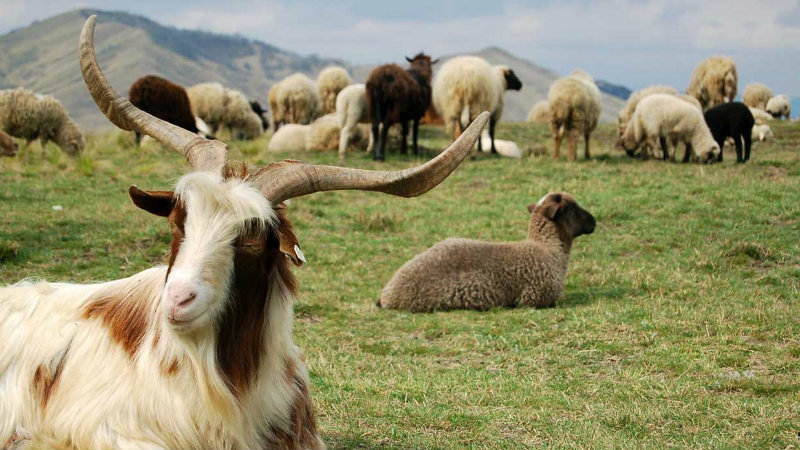‘Rangelands on the verge of degradation in Iran’

TEHRAN – In recent years, soil erosion, climate change, drought spells, overexploitation as well as over-grazing have led to the degradation of many rangelands in Iran, an official with the Department of Environment has said.
According to Safeopedia, rangelands are open areas of land that are used for farming or hunting. Farm animals and wild animals roam and graze on rangelands. They are distinguished from pasture lands by the fact that they maintain native vegetation rather than what has been established by humans. Rangelands include many different climates and also contain land that cannot be grazed.
Grazing is an important use for rangelands, but rangelands are not defined by grazing. Rangelands are defined as areas where the native plants are predominantly grasses or grass-like plants and where there is an absence of woody plants.
“Rangelands in Iran constitute over 52 percent of the total surface area, which are home to some 7,000 plant species, IRNA quoted Ali Moridi as saying on Sunday.
“Provision of forage supplement for livestock, production of pharmaceutical and industrial products as well as conservation of herbal and animal genetic resources are the main functions of rangelands,” Moridi said.
“If rangelands are not managed properly in the country, undoubtedly, no rangeland will remain within the next few years,” he regretted.
Recognizing rangelands carrying capacity is of great importance in preventing damages caused by land use change or intensive grazing, however, carrying capacity of Iranian rangelands is not fully identified yet, he regretted.
He also noted that excessive grazing is the main cause of depleting rangeland vegetation and accelerating soil erosion in the country.
“Iran has a mean soil loss rate of 16 tons per hectare per year,” he stated.
According to Eurostat website, approximately 11.4 % of the European Union (EU) territory is estimated to be affected by a moderate to high level soil erosion (more than 5 tons per hectare per year).
However, Science Direct wrote that that erosion of agricultural soils in the United States is responsible for loss of an average of 30 tons per hectare per year, about eight times greater than the rate of soil formation in the human lifetime.
Moridi went on to say that erosion, whether caused by wind or earth flows, depletes rangeland vegetation and leads to floods, in general, natural environment and its components are all links in the chain and interconnected, so tearing each one results in destruction of another.
He explained that once the rangeland vegetation fades away, the soil cannot absorb rainfall water effectively and reduced infiltration rate will cause the soil surface to puddle and result in greater flooding potential.
Moridi warned that in the event of a flood, as the amount of sediment carried into a reservoir is at its highest during floods, wetlands or a dams located in downstream will suffer serious damage.
According to a research conducted by scientists at the University of Florida in 2006 titled “Effect of urban soil compaction on infiltration rate”, a decrease in infiltration rate will result in increased runoff volume, greater flooding potential and reduced groundwater recharge within watersheds.
Referring to rangelands of Fars province, Moridi noted that Zagros forests are located in this province, which can face destruction in case of launching any project without the assessment of the environmental consequences.
Grazing intensity is different throughout the country; in some areas it is 2 or 3 times more than the carrying capacity of the areas which result in total disappearance of plant species severe soil erosion, he regretted.
“In line with drought, erosion has also given rise to dust particles formation as currently sand and dust storms keep hitting different parts of Khuzestan province,” he stated.
The Department of Environment does not play a direct role in rangelands conservation, but it will always have full supervision on rangelands, also provincial departments of environments must be careful while implementing plans in rangelands to prevent probable damages, he remarked.
According to the law, the Forest, Rangelands and Watershed Organization is the responsible body for the rangelands in the country, he added.
Elsewhere in his remarks, he mentioned that all projects are subjected to environmental impact assessment according to the law, however, grazing the livestock is not considered as a project and cannot be environmentally assessed by the Department of Environment.
“Given the current conditions of rangelands in the country, all projects must be assessed regarding the ecological carrying capacity of each area, otherwise taking any actions is a betrayal to the environment as it can have many irreparable consequences,” he concluded.
FB/MQ/MG
Leave a Comment